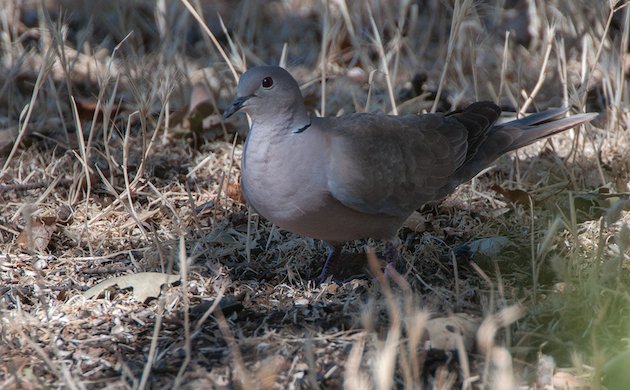
The Eurasian Collared-Dove (Streptopelia decaocto) was first released in the New World on the island of New Providence, in the Bahamas. In the mid-1970s, a local breeder was burglarized and a few of his birds escaped, after which the breeder released his remaining stock of about 50 birds1. Since its introduction, this dove has spread quickly across the North American continent.
This is an animated map made from Christmas Bird Count data of Eurasian Collared-Dove sightings from 1987 through 19972.
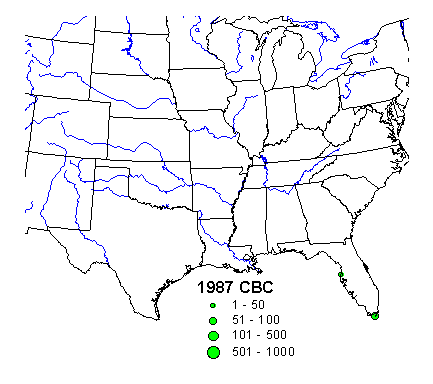
The northwestern spread of this non-native species made it to my yard a few years ago. Click on photos for full sized images.
The following maps I created on eBird show the dramatic growth in the spread of the Eurasian Collared-Dove from 2002 to 2014. This first map is data from 2002 through 2003.
The lightest shade of lavender coincides with a 0 – 2% frequency of sightings, the next darker shade 2 – 10%, the next 10 – 25%, the next 25 – 40% and the darkest (almost black) shade is a 40 – 100% occurrence of the species.
This next map is data from 2007 through 2008.
And the last one shows the stats from 2013 to the present.
In North America and the Caribbean, they are found mostly in suburban, urban, and agricultural areas where grain, roost, and nest sites are available. They feed from grain storage and spillage areas, livestock yards, and bird feeders.
Both the juvenile Western Scrub-Jay and the Eurasian Collared-Dove were both a bit surprised to see one another at my platform feeder at the same time. Note the square tail on the Collared-Dove. A good field mark that differentiates it from the Mourning Dove, which has a pointed tail.
I’m including this photo to show the white terminal band of the undertail which is most conspicuous in flight.
I am always alarmed when I see rapid expansion of a non-native species of any kind. They often tend to displace native species, whether they be plant or animal.
David Bonter, Benjamin Zuckerberg and Janis Dickinson of the Cornell Lab of Ornithology believe that studying the relationships among introduced species, their preferred habitats, and native species, can be important for predicting the effects of invasions like this on native populations. They studied the relationship between collared-dove abundance and the abundance of other dove species in the study area, anticipating a negative effect on established species following the introduction of a potential competitor.
I was pleased to discover that contrary to their expectations, the site-level abundance of four other dove species all increased with collared-dove abundance throughout the sampling period3 rather than decreasing.
Like most dove species, Eurasian Collared-Doves are prolific breeders. In warm climates they can breed year round. In Florida nesting has been reported in every month except January1. They usually lay two eggs per clutch and most often, successive clutches will be laid while adults are still attending fledglings!
This graph created by the Audubon Society from their Great Backyard Bird Count data is rather striking. You can see that their numbers are increasing faster as time goes on.
This video explains the rapid invasion of the Eurasian Collared-Dove pretty well I think 😉 If you haven’t seen them in your area yet, you probably will soon.
httpv://youtu.be/bzUfM1ok-_s
Referfences: 1Birds of North America Online, 2Birdsource, 3Invasive birds in a novel landscape: habitat associations and effects on established species
…
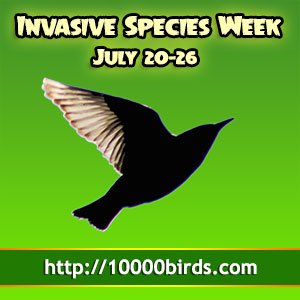 Here at 10,000 Birds 20 July – 26 July is Invasive Species Week. We use the term “Invasive Species” in the broadest sense, to encompass those invasive species that have expanded beyond their historical ranges under their own power, by deliberate introduction, or by unintentional introduction. The sheer number of species that have been shuffled around on our big earth is impressive, though we will be dealing with the smaller sample size of invasive avians and other invasives that effect avians. Nonetheless, this week will be chock full of invasive species. So batten down the hatches, strap on your helmet, and prepare to be invaded! To access the entire week’s worth of content just click here.
Here at 10,000 Birds 20 July – 26 July is Invasive Species Week. We use the term “Invasive Species” in the broadest sense, to encompass those invasive species that have expanded beyond their historical ranges under their own power, by deliberate introduction, or by unintentional introduction. The sheer number of species that have been shuffled around on our big earth is impressive, though we will be dealing with the smaller sample size of invasive avians and other invasives that effect avians. Nonetheless, this week will be chock full of invasive species. So batten down the hatches, strap on your helmet, and prepare to be invaded! To access the entire week’s worth of content just click here.


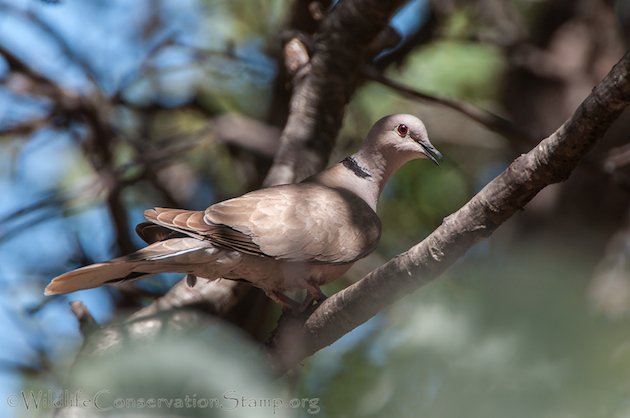
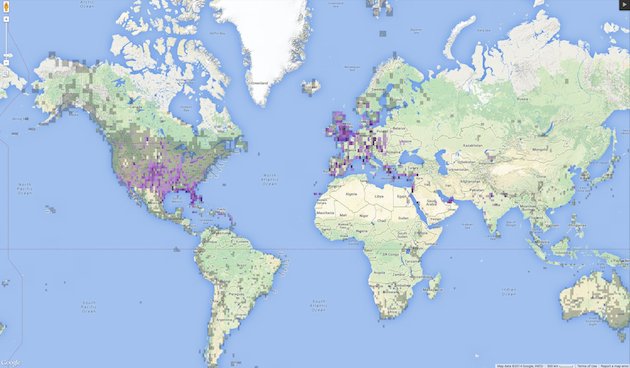
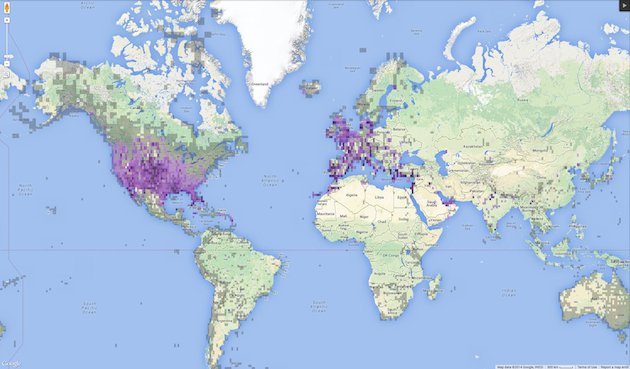

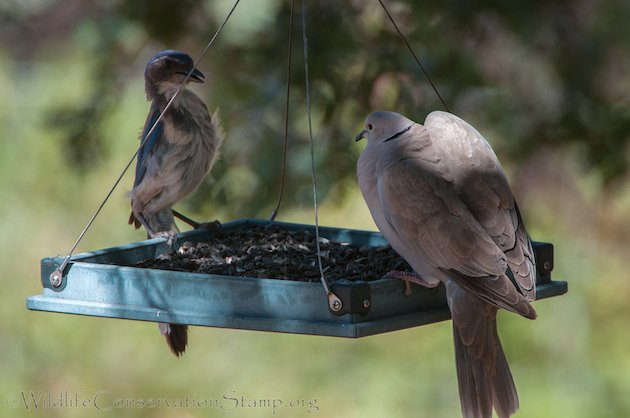
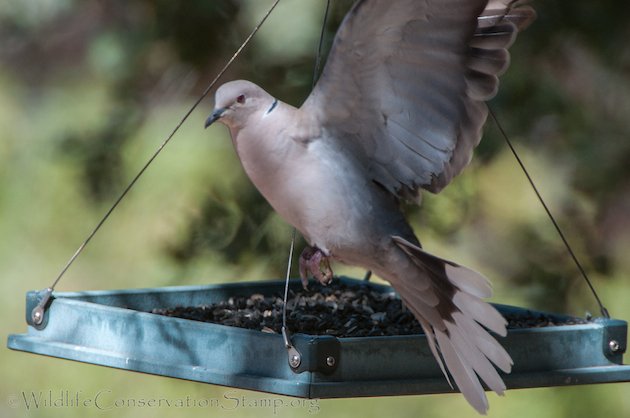
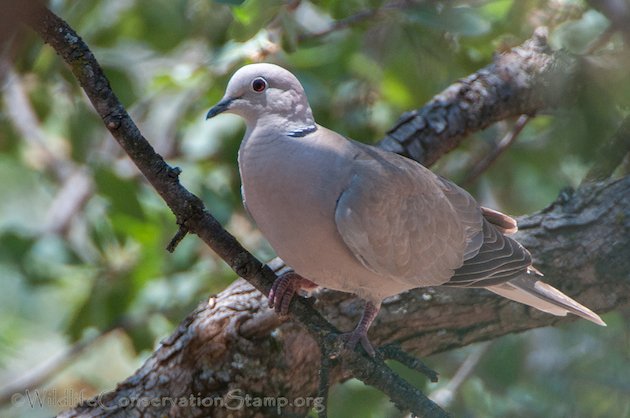
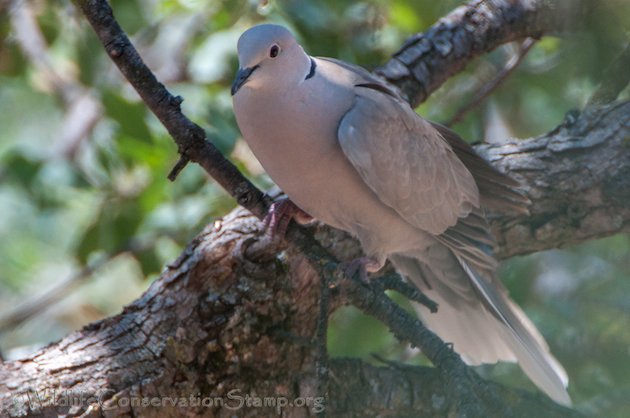
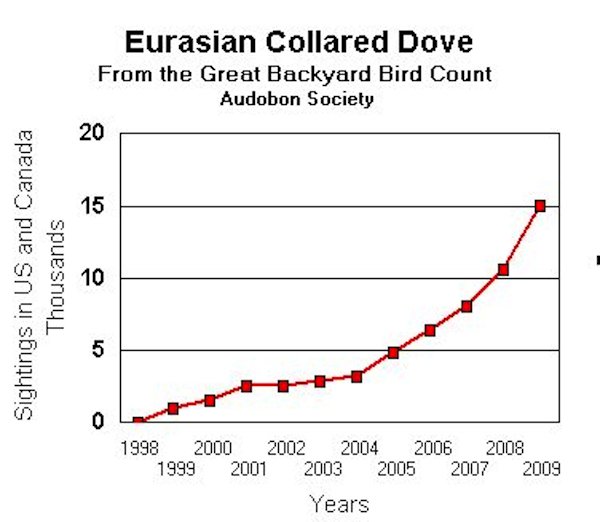











Worth noting that this species has been a very successful invader in Europe too, spreading from Turkey to most of Europe in the 20th century.
Expect an increase in Accipiter numbers as well. These birds are SO easy.
now I understand it being a non-native species ..and a smile to see the reaction on the feeder from the little Western Scrub-Jay. A good note to read your discovery of increased numbers of other doves …TFS Larry
It is quite peculiar that their spreads from SE Europe to the rest of the continent is repeated in America, with them mostly spreading to the NW from Florida.
I was surprised to see the rapid rise in the numbers of Eurasian Collared-Doves in India also
Thank you Steve! I knew that there had to be another positive side to this increase in Eurasian Collared-Dove numbers 😉
I was pleased to find the study on the increase in other dove numbers as well. I was afraid of losing the Mourning Doves in my area but they seem to be holding their own.
Maybe they prefer flying against the prevailing winds 😉
The Eurasion collared doves began showing up at my feeders in Paradise, CA this year. Before that it was only mourning doves for 14 years with an occasional single band-tailed pigeon. There are 3 doves, two definitely a pair, that come several times a day.
I have these beautiful gentle birds coming to my backyard every day. ?
I love them!! This morning I counted 8 pairs! The other birds, small wrens, robins and cardinals are not frightened of them. I have noticed that their presence has kept the starlings away!
I love that. Those guys get aggressive towards the smaller guys and they are so loud! Happy to care for them.